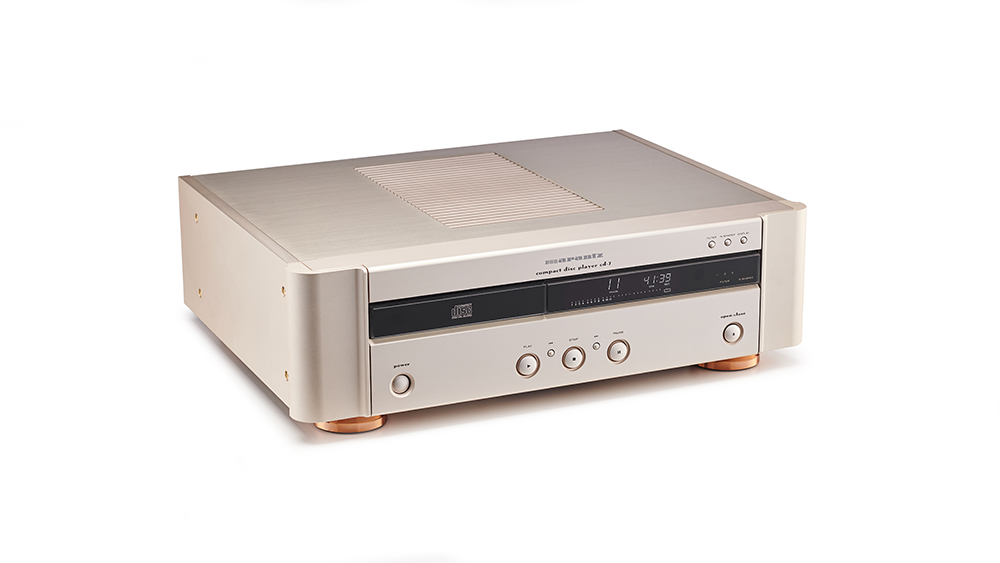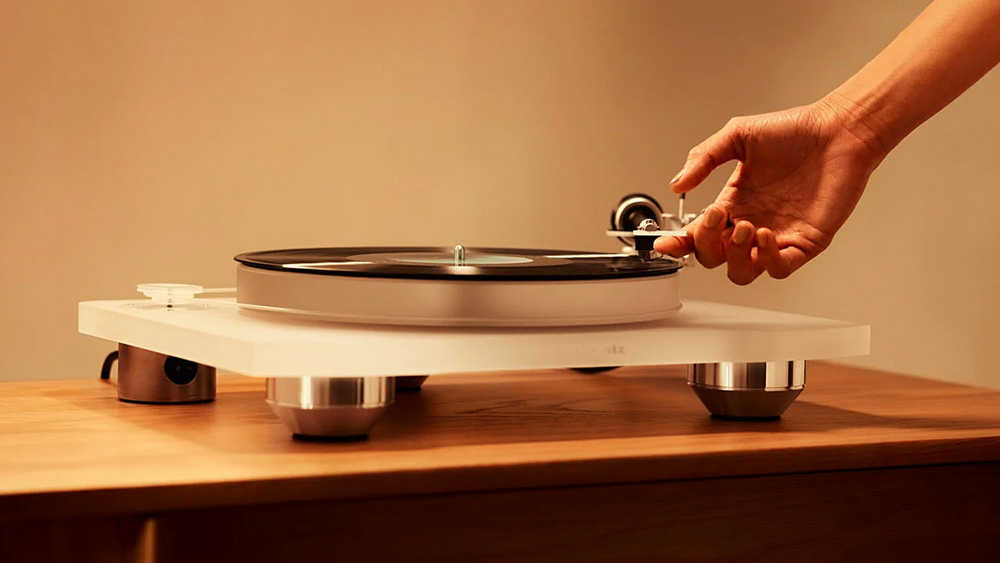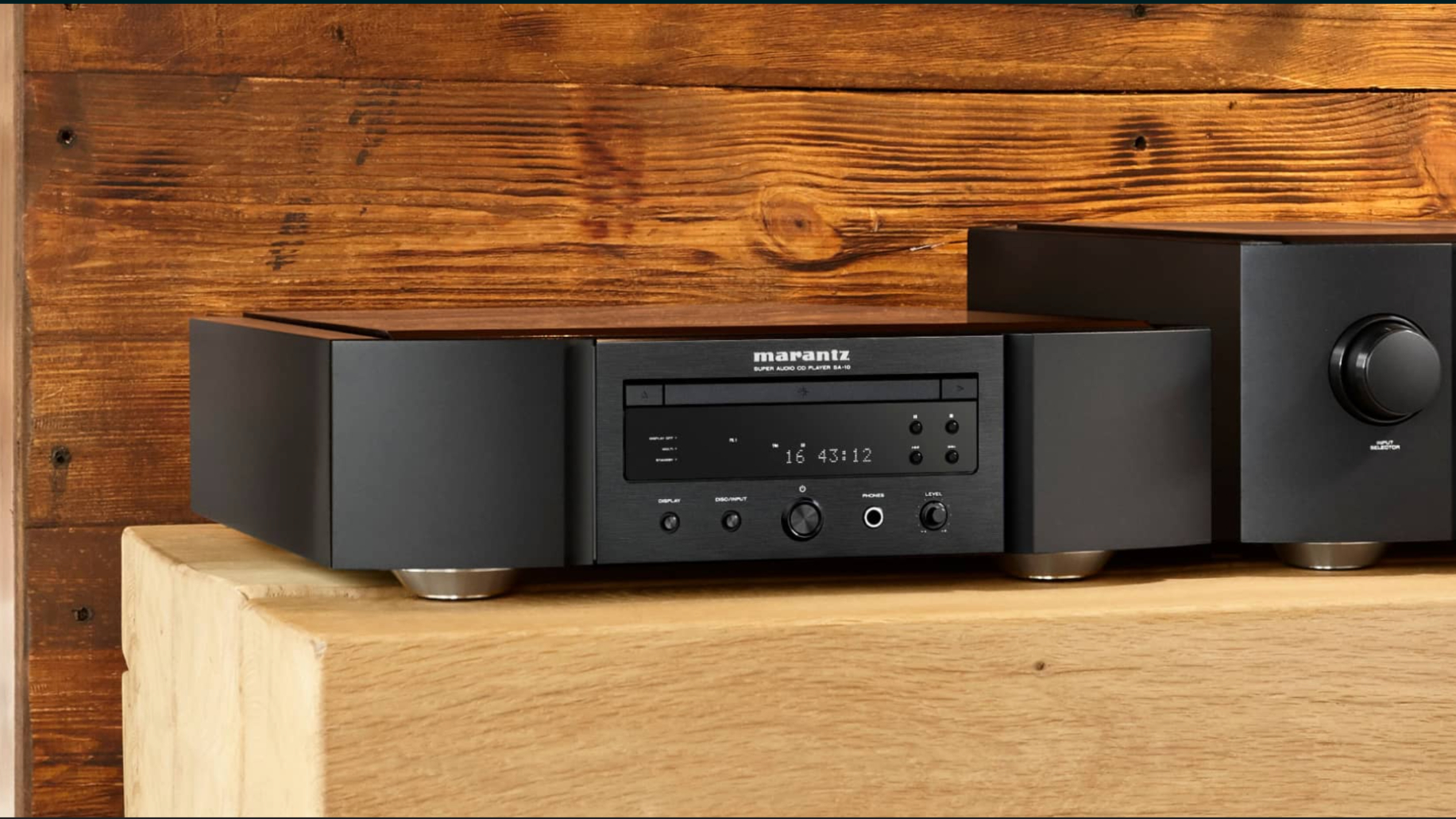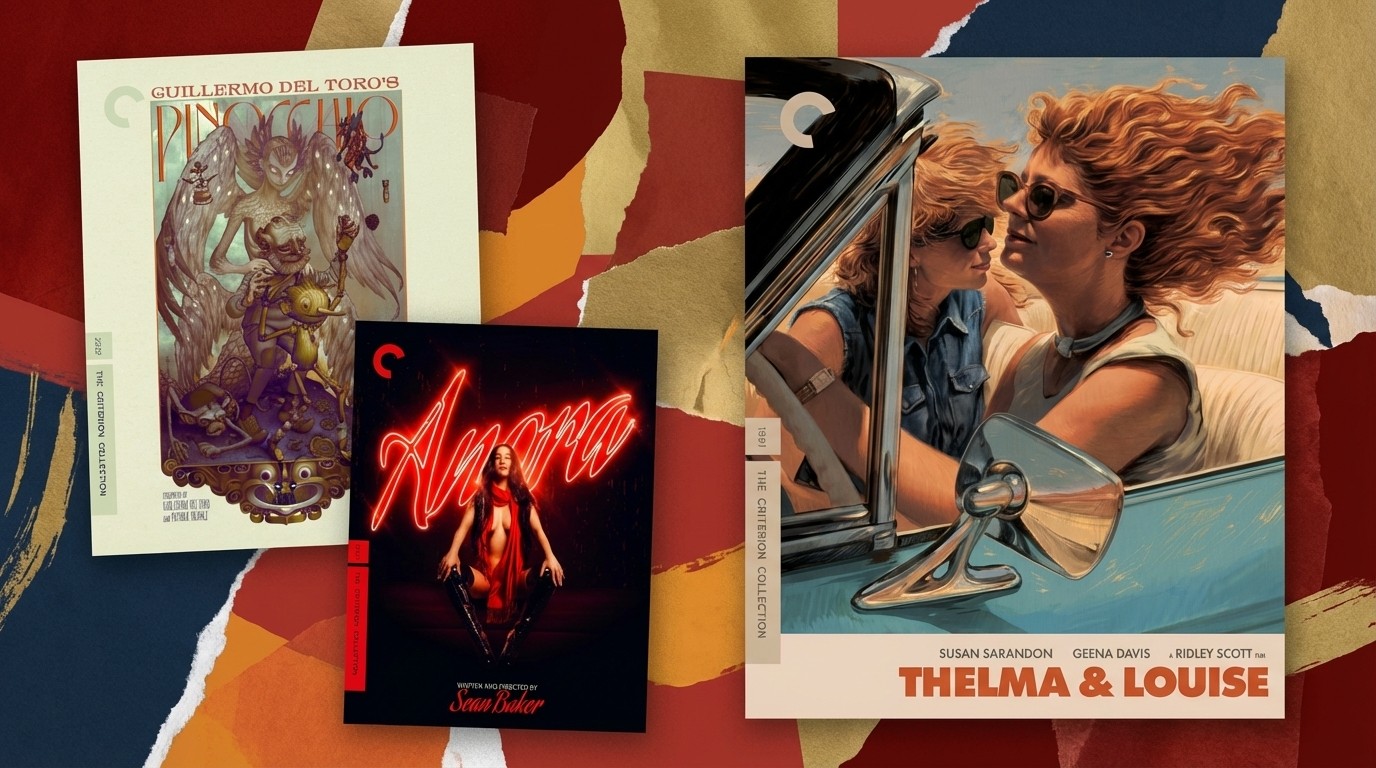Rainer Finck on his hi-fi career highlights as a 30-year Marantz engineer and original developer of the Philips Bitstream DAC
He now works with another Fink – Karl-Heinz – at the FinkTeam speaker brand

Few electronics engineers can boast a CV and reputation as esteemed as Rainer Finck’s. In the mid-’80s, his career got off to a flyer as an application engineer at Philips Semiconductors, where he helped develop the original Bitstream Conversion method, which primarily paved the path for SACD and DSD.
The 90s saw Finck take his digital audio expertise to Marantz, where for 30 years he designed and engineered several of the brand’s most famous products, alongside fellow Marantz legend, the late Ken Ishiwata.
It’s an illustrious 40-year (and counting) career that you won’t be surprised to hear isn’t short of proud moments and milestones. On his return from the High End Munich show, we asked Finck to name some of the products he is most proud to have developed.
The Philips years (1985-1990)
It makes sense to begin where it all started for Finck: in the ‘radio/audio’ department of Philips Semiconductors in Hamburg. This was, of course, the time in which CD became the trendy technology, and consequently Philips expanded that department, involving Finck in digital-to-analogue conversion projects.
Hindsight is a wonderful thing, and today we can truly appreciate the fruits that came from Finck and the rest of the original Philips Bitstream team’s labour back then.
“My task was to get the new first generation of bitstream DACs of Philips to the same level as its famous 'golden crown' TDA1541,” said Finck. The TDA1541 had been developed in the early 80s and was the reference 16-bit digital-to-analogue converter chip, found inside famous CD players like the Marantz CD-7, Cambridge Audio CD1 and Meridian 207.
But times were a’changing, and the goal had become to replace the 16-bit digital-to-analogue conversion technique, which used 16 resistors that inherently allowed room for errors in the code conversion, producing ‘poor linearity’ and thus introducing ‘non-linearity distortion’.
The latest hi-fi, home cinema and tech news, reviews, buying advice and deals, direct to your inbox.
The Bitstream method Philips developed was a technique that, to put it rather crudely, converted the 16-bit signal into a one-bit code of ‘0’ and ‘1’, oversampled it (256 times), used noise shaping to reduce noise created in that process, and then used Pulse Density Modulation (PDM) to create a waveform that could be passed through a low-pass filter to obtain an analogue signal.
“We succeeded in doing this, and the technology behind this is today called DSD256. The learnings of this first project went into the second generation of DACs that were built with 'differential' outputs.
“Since then, multi-bit DACs disappeared from the market and today about 90 per cent of the DACs are built 'differential' and use a hybrid of bitstream and other newer technologies.”
Marantz CD-7 (1998-2000)

After five years in the lab, Finck sought a change and it just so happened that Marantz’s German office in Frankfurt had closed and moved to Hamburg. The company was hiring almost an entire fleet of staff…
“My first job at Marantz Germany was as a product manager. But Ken Ishiwata knew about my background at Philips and challenged me with all kinds of questions,” recalls Finck.
“One of them was about the side effects and sound quality of digital filters in CD players. For our first setup to test this out, we modified an existing CD player with a DSP. We programmed 'analog' filters – filters with all kinds of characteristics – and came to the conclusion that most of them had audible effects – some positive, some negative.
“At the end, we liked the characteristics of a phase-corrected analog filter best, and the marketing name became – LMF (Linear Music Filter). This was first introduced in the Marantz CD-7.”
One of the best CD players of What Hi-Fi?'s lifetime, the CD-7 was an integrated (rather than two-box) CD player that would stand as Marantz’s last reference model and carry legendary status.
It actually eschewed the then-emerging single-bit conversion for tried and tested multi-bit, and was indeed the final Marantz player built with the “Golden Crown” (as Finck puts it) TDA1541 chip, which was shortly after discontinued by Philips.
“For quite a number of people, the CD-7 was the best Marantz CD player. It is today a collector's item,” says Finck. “What made it really special is the fact that we improved its low-level performance by using it in a kind of Class A mode… which was so far a nice little secret!”
Marantz TT-15 (2006-today)

Comparatively less celebrated today, yet cemented as one of Finck’s most memorable achievements, is the Marantz TT-15 turntable, which joined the PM-11 integrated and SA-11 SACD player in the company’s Reference series at that time. Perhaps it was notable – and an accomplishment – alone that it was green-lit in 2004.
“About two years before its introduction, when I was managing director of Marantz Germany, I asked my boss for a turntable to complement the Reference line-up,” says Finck. “Imagine… it was two decades before today's vinyl boom! Except for Ken, who supported me, everybody else in Europe called me crazy. But we found a way to realise the TT-15 without tooling costs and huge investments, and got a go.”
The TT-15 was actually produced by Clearaudio, a collaboration that Finck tells us started at the Golden Ear Awards ceremony of the German magazine AUDIO when he and Clearaudio owner Robert Suchy discussed the then-current and forecasted state of the vinyl market.
“All marketing experts had already forecasted the death of vinyl and turntables before the millennium,” says Finck. “But we could see that an increasing number of new albums had been produced in small numbers on vinyl again. It was nothing comparable to the boom of the past couple of years, but it was clearly not fading out.”
The result of that discussion and the ensuing melding of two creative minds produced a turntable that had “nothing (or very little) to do with any of their [Clearaudio’s] products,” says Finck. “A win-win for Clearaudio and Marantz.
“After we showed it at the High End show in Munich, every sales organisation in Europe and also the US and Japan wanted it,” he continues. “And guess what? It is still in production…”
Marantz SA-10 (2017-2024)

(We told you Finck had had a hand or two in several famous Marantz releases…)
Another product that, for many hi-fi fans, needs little introduction, the SA-10 disc player arrived in 2017 as, to quote our review from back then, “one of the best digital source components around”, and has only recently been succeeded by the new 10 Series SACD player.
After the best part of two decades designing Marantz products, Finck was at this time building Boston Acoustics, a sister audio brand also under the Sound United ownership, in Europe. A busy time, he tells us, but that didn’t stop him from entertaining another little provocation from Ishiwata: “Can we do our own DAC?” And so began a side project for Finck…
“A little bit of programming and we had some tools to convert our music files to DSD and could compare all kinds of digital filters and noise shapers,” says Finck. “I did some tests on how to convert the bitstream into analogue, and with a simple trick it was possible to achieve measurement results on a similar level to the high-end converters on the market.”
That trick was indeed patented in the US and UK, and is still pending in Europe. This proprietary technology – Marantz Musical Mastering (MMM), to give the brand’s marketing team another approving nod – incorporated elements of the single-bit conversion it had used in the past, but advanced it through new filtering techniques and upconversion.
Having made its debut in the SA-10, MMM was carried into subsequent Marantz digital products (such as the SA-KI Ruby player) and is still applied in current creations, including the 30n SACD player/streamer. So the SA-10 left quite a legacy and, as Finck rightly acknowledges, brought Marantz quite some fame.
Marantz KI Ruby (2019-2021)
To celebrate his 40th anniversary at Marantz, Ishiwata designed and released the SA-KI Ruby disc player and PM-KI Ruby amplifier (the KI Pearl Lite amplifier and player were introduced a decade earlier to mark his 30th anniversary, and are owned by this very writer!)
The duo drew on technology found in the brand’s then-flagship models, with the amplifier implementing a moving-magnet and moving-coil phono stage with the brand’s new phono EQ circuitry design.
“Ken was a vinyl lover, and as a special for him, I spent quite some effort to get a special phono stage into the product,” says Finck. “To my knowledge, it was the first time Marantz used a discrete MM phono stage without global feedback. We managed to get it done without poor measurement performance.”
Marantz 6006 Series UK Edition (2020)

Last but not least among Finck’s product picks is another amplifier and disc player set. This time the pairing is at the other end of the price spectrum, and also rather unusual in both concept and name; it was created as a sort of response to the repercussions of Brexit.
“We needed something to replace the 6006 Series after the British Pound made a dive due to the vote,” explains Finck of the time when prices in the UK were, all of a sudden, far lower than in the rest of Europe.
He had a rather good foundation from which to work for these 6006 UK Edition products, of course, with the 2016-launched 6006 Series components (the CD6006 CD player and PM6006 amplifier) having racked up several What Hi-Fi? Awards as well as accolades from other publications.
But building up from that wasn’t without its hurdles. First, Finck was on his own, with Ishiwata having been hospitalised in China. And second, time was of the essence as Marantz wanted the 6006 UK Edition products to be ready in time to be nominated for that year’s What Hi-Fi? Awards season (sorry, Herr Finck!)
“I had only a couple of months to find ways to improve on already very good products, but the typical ‘SE’ [Special Edition] treatment was most likely not enough to bring prices up and justify the price increase,” he recalls.
In the end, he tells us, he found a way to improve the power amplification section of the integrated through “a relatively simple modification (circuit change) that improved the dynamic behaviour and reduced temperature drift.” Similarly, with the CD player, he was able to “reduce the noise on the analogue power supply further, and add some minor changes here and there to fine-tune the sound characteristics.
“The challenge for these kinds of products is always finding the right balance without adding huge cost,” says Finck. It was a success, evident by not only the consequent acclaim of both components but also the fact that many of those changes carried into the equally celebrated (and current!) next-generation models, the PM6007/CD6007.
“This was something special as it is compared to the rest of the most affordable solutions that have arrived in the past five/six years,” says Finck. “It’s enjoyed and entertained by far the highest number of people and is, for sure, the most popular and well-known product in the UK.”
And Rainer Finck today? At FinkTeam!
You see, quite the CV! But after three decades, Finck’s Marantz (and Sound United) chapter closed when Masimo (which acquired Sound United in 2022 and which now intends to sell it on to Harman International) closed the 'Innovation and Research' team he was part of.
But when a chapter closes and, despite retirement knocking on the door, you are still passionate about and dedicated to designing products, another one opens. For Finck that is at FinkTeam, the speaker manufacturer founded by the worthy winner of our Outstanding Contribution Award 2022, Karl-Heinz Fink.
Finck and Fink worked together on various projects over the years as the latter did some consultancy work for Marantz (and other Sound United brand) speakers yonks ago – but now their working relationship can really blossom.
“We have now some interesting projects where I can work on electronics and he on speakers,” Finck says. “So it’s a perfect match and some fun before retirement!”
We'd say!
MORE:
The 11 most exciting hi-fi products we saw at High End Munich 2025

Becky is a hi-fi, AV and technology journalist, formerly the Managing Editor at What Hi-Fi? and Editor of Australian Hi-Fi and Audio Esoterica magazines. With over twelve years of journalism experience in the hi-fi industry, she has reviewed all manner of audio gear, from budget amplifiers to high-end speakers, and particularly specialises in headphones and head-fi devices.
In her spare time, Becky can often be found running, watching Liverpool FC and horror movies, and hunting for gluten-free cake.
You must confirm your public display name before commenting
Please logout and then login again, you will then be prompted to enter your display name.
